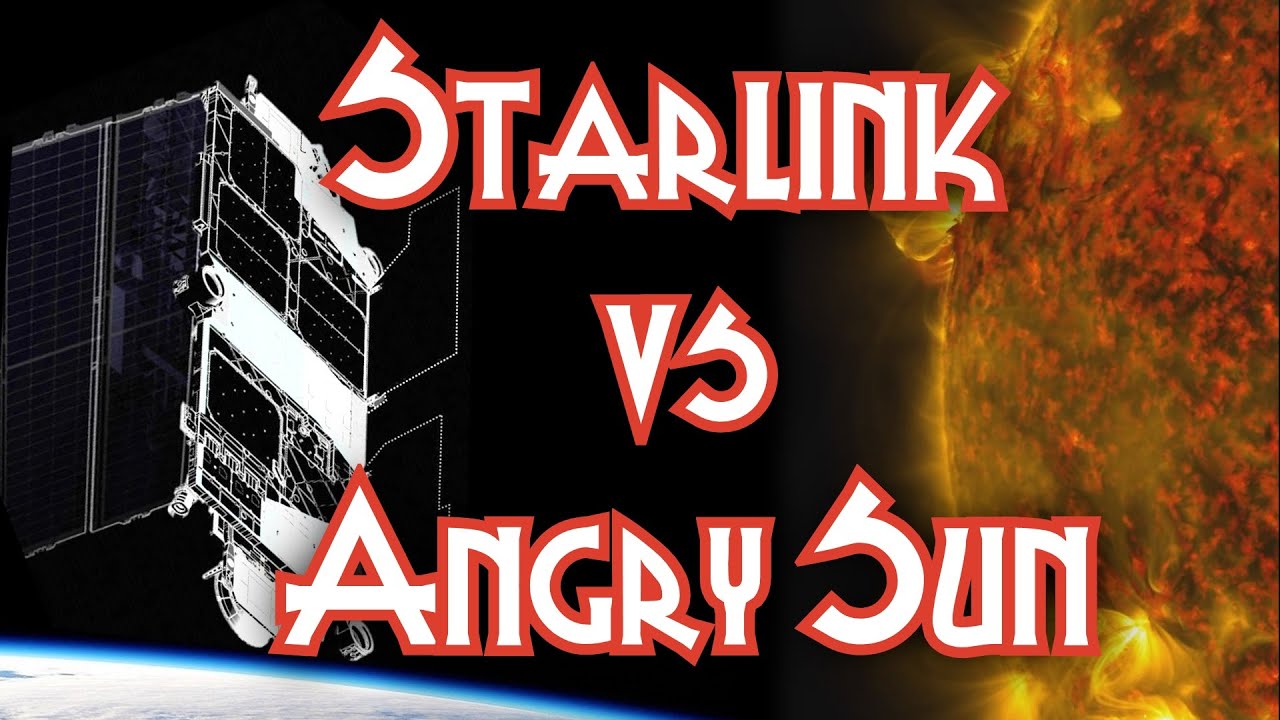SpaceX has posted an update on their Web Site dated 2022-02-08, “Geomagnetic Storm and Recently Deployed Starlink Satellites” (SpaceX does not provide direct links to individual update posts, so the title links to the updates page where, at this writing, that post is at the top. As other posts are added, it will scroll down on the page and you’ll have to go looking for it.)
In summary, after 49 Starlink satellites were launched by the Starlink Group 4-7 mission, solar activity caused the upper atmosphere to expand, increasing drag in the low orbit into which Starlink satellites are initially placed. To protect against orbital decay, SpaceX placed the satellites into “safe mode”, in which they turn their solar panels edge-on to minimise drag.
SpaceX deploys its satellites into these lower orbits so that in the very rare case any satellite does not pass initial system checkouts it will quickly be deorbited by atmospheric drag. While the low deployment altitude requires more capable satellites at a considerable cost to us, it’s the right thing to do to maintain a sustainable space environment.
Unfortunately, the satellites deployed on Thursday were significantly impacted by a geomagnetic storm on Friday. These storms cause the atmosphere to warm and atmospheric density at our low deployment altitudes to increase. In fact, onboard GPS suggests the escalation speed and severity of the storm caused atmospheric drag to increase up to 50 percent higher than during previous launches. The Starlink team commanded the satellites into a safe-mode where they would fly edge-on (like a sheet of paper) to minimize drag—to effectively “take cover from the storm”—and continued to work closely with the Space Force’s 18th Space Control Squadron and LeoLabs to provide updates on the satellites based on ground radars.
But when they tried to exit safe mode and begin the process of raising the satellites to their operational orbit, most of them were prevented from exiting safe mode due to atmospheric drag.
Preliminary analysis show the increased drag at the low altitudes prevented the satellites from leaving safe-mode to begin orbit raising maneuvers, and up to 40 of the satellites will reenter or already have reentered the Earth’s atmosphere. The deorbiting satellites pose zero collision risk with other satellites and by design demise upon atmospheric reentry—meaning no orbital debris is created and no satellite parts hit the ground. This unique situation demonstrates the great lengths the Starlink team has gone to ensure the system is on the leading edge of on-orbit debris mitigation.
So, it looks like the most recent Starlink launch, while it delivered its payloads into the intended orbit, may be a close to total loss due to solar activity and its effects on the Earth’s atmosphere.
Note that SpaceX has apparently “gifted” us with the use of “demise” as a verb to mean disintegrate or burn up. The only prior use of this word as a verb I can find in reference works is in the technical legal sense of transferring property, usually by inheritance. Maybe SpaceX is implying something like the old test pilot jargon when speaking of ejecting from an airplane soon to be a flaming wreck on the ground, “giving it back to the taxpayers”.
